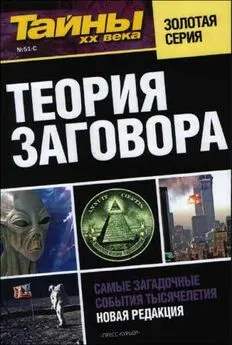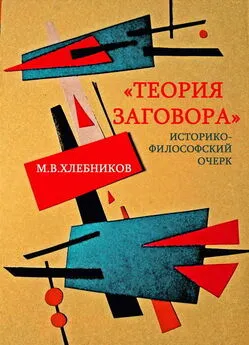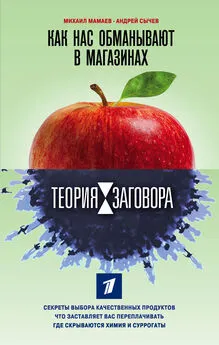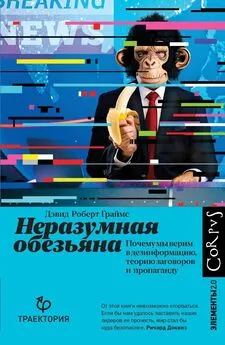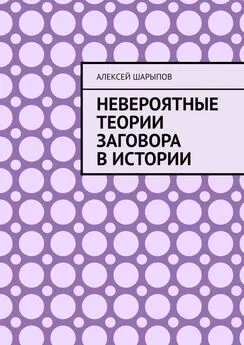Дэвид Граймс - Неразумная обезьяна [Почему мы верим в дезинформацию, теории заговора и пропаганду] [litres]
- Название:Неразумная обезьяна [Почему мы верим в дезинформацию, теории заговора и пропаганду] [litres]
- Автор:
- Жанр:
- Издательство:Литагент Corpus
- Год:2020
- ISBN:978-5-17-121922-2
- Рейтинг:
- Избранное:Добавить в избранное
-
Отзывы:
-
Ваша оценка:
Дэвид Граймс - Неразумная обезьяна [Почему мы верим в дезинформацию, теории заговора и пропаганду] [litres] краткое содержание
Неразумная обезьяна [Почему мы верим в дезинформацию, теории заговора и пропаганду] [litres] - читать онлайн бесплатно ознакомительный отрывок
Интервал:
Закладка:
D. R. Grimes. Denying climate change isn’t scepticism – it’s “motivated reasoning” // The Guardian (2014).
D. M. Kahan et al. Motivated numeracy and enlightened self-government // Behavioural Public Policy 1.1 (2017): 54–86.
National Research Council. Identifying the culprit: Assessing eyewitness identification . National Academies Press, 2015.
O. Sacks. Speak, Memory // New York Review of Books (2013).
E. F. Loftus, J. E. Pickrell. The formation of false memories // Psychiatric Annals 25.12 (1995): 720–725.
E. F. Loftus. Planting misinformation in the human mind: A 30-year investigation of the malleability of memory // Learning & Memory 12.4 (2005): 361–366.
N. Schreiber et al. Suggestive interviewing in the McMartin Preschool and Kelly Michaels daycare abuse cases: A case study // Social Inf luence 1.1 (2006): 16–47.
T. E. Moore. Scientific Consensus and Expert Testimony: Lessons from the Judas Priest Trial // Skeptical Inquirer , 20 (6) (1996).
O. Blanke et al. Neurological and robot-controlled induction of an apparition // Current Biolog y 24.22 (2014): 2681–2686.
J. A. Cheyne et al. Hypnagogic and hypnopompic hallucinations during sleep paralysis: neurological and cultural construction of the night-mare // Consciousness and Cognition 8.3 (1999): 319–337.
M. E. Chevreul. De la baguette divinatoire: du pendule dit explorateur et des tables tournantes, au point de vue de l’histoire de la critique et de la meth-ode experimentale . Mallet-Bachelier, 1854.
C. A. Mercier. Automatic Writing // British Medical Journal (1894): 198–199.
M. P. Mostert. An activist approach to debunking FC // Research and Practice for Persons with Severe Disabilities (2014): 203–210.
D. L. Wheeler et al. An experimental assessment of facilitated communication // Mental Retardation 31.1 (1993): 49.
M. P. Mostert. Facilitated communication and its legitimacy – Twenty-first century developments // Exceptionality 18.1 (2010): 31–41.
B. R. Forer. ‘The fallacy of personal validation: a classroom demonstration of gullibility // The Journal of Abnormal and Social Psycholog y 44.1 (1949): 118.
S. Carlson. A Double-blind test of astrology // Nature 318, (1985), 419–425.
D. J. Pittenger. Measuring the MB TI… and coming up short // Journal of Career Planning and Employment 54.1 (1993): 48–52.
G. Montgomery, I. Kirsch. Mechanisms of placebo pain reduction: an empirical investigation // Psychological Science 7.3 (1996): 174–176.
E. Ernst. The attitude against immunisation within some branches of complementary medicine // European Journal of Pediatrics 156.7 (1997): 513–515.
G. J. Rubin, R. Nieto-Hernandez, S. Wessely. Idiopathic environmental intolerance attributed to electromagnetic fields (formerly “elec-tromagnetichypersensitivity”): An updated systematic review of provocation studies // Bioelectromagnetics 31 (1) (2010).
The World Health Organization . Electromagnetic fields and public health – Electromagnetic hypersensitivity (2005).
M. Lamberg, H. Hausen, T. Vartiainen. Symptoms experienced during periods of actual and supposed water fluoridation // Community Dentistry and Oral Epidemiolog y , 25.4 (1997): 291–295.
J. Kruger, D. Dunning. Unskilled and unaware of it: how difficulties in recognizing one’s own incompetence lead to inflated self-assessments // Journal of Personality and Social Psycholog y , 77 (6) (1999).
S. Selvin. A Problem in Probability (Letter to the Editor) // The American Statistician 29 (1): 67, (1975).
W. T. Herbranson, J. Schroeder. Are Birds Smarter Than Mathematicians? Pigeons (Columba livia) Perform Optimally on a Version of the Monty Hall Dilemma // Journal of Comparative Psycholog y 124 (1) (2010).
G. Gigerenzer. Reckoning with risk: learning to live with uncertainty . Penguin UK, 2003.
Royal Statistical Society. Royal Statistical Society concerned by issues raised in Sally Clark case (2001).
Royal Statistical Society. Letter from the President to the Lord Chancellor regarding the use of statistical evidence in court cases (2002).
S. J. Watkins. Conviction by mathematical error?: Doctors and lawyers should get probability theory right // British Medical Journal (2000): 2–3.
P. J. Bickel, E. A. Hammel, J. W. O’Connell. Sex bias in graduate admissions: Data from Berkeley // Science , 187.4175 (1975): 398–404.
D. R. Appleton, J. M. French, M. P. J. Vanderpump. Ignoring a covariate: An example of Simpson’s paradox // The American Statistician , 50.4 (1996): 340–341.
T. Vigen. Spurious Correlations . Hachette Books, 2015.
J. P. A. Ioannidis. Stealth research: is biomedical innovation happening outside the peer-reviewed literature? // Journal of the American Medical Association 313.7 (2015): 663–4.
E. P. Diamandis. Theranos phenomenon: promises and fallacies // Clinical Chemistry and Laboratory Medicine , 53 (7) (2015): 989–93.
E. Yong. Beefing With the World Health Organization’s Cancer Warnings // The Atlantic (2015).
J. P. A. Ioannidis. ‘Why most published research findings are false’, PLoS medicine , 2.8 (2005): e124.
D. Colquhoun. An investigation of the false discovery rate and the misinterpretation of p-values // Royal Society open science , 1.3 (2014): 140216.
D. R. Grimes, C. T. Bauch, J. P. A. Ioannidis. Modelling science trustworthiness under publish or perish pressure // Royal Society open science , 5.1 (2018): 171511.
P. Krugman. The Falsity of False Equivalence // New York Times (2016).
D. R. Grimes. Impartial journalism is laudable. But false balance is dangerous // The Guardian (2016).
D. Michaels, M. Jones. Doubt is their product // Scientific American , 292.6 (2005): 96–101.
M. T. Boykoff, J. M. Boykoff. Balance as bias: global warming and the US prestige press // Global Environmental Change , 14.2 (2004): 125–136.
British Broadcasting Corporation. Trust Conclusions on the Executive Report on Science Impartiality Review Actions (2014).
M. Bruggemann, S. Engesser. Beyond false balance: how interpretive journalism shapes media coverage of climate change // Global Environmental Change , 42 (2017): 58–67.
E. Bakshy, S. Messing, L. A. Adamic. Exposure to ideologically diverse news and opinion on Facebook // Science 348.6239 (2015): 1130–2.
M. Del Vicarioet et al. The spreading of misinformation online // Proceedings of the National Academy of Sciences, 113 (3): 554–9, (2016).
M. Van Alstyne, E. Brynjolfsson. Electronic Communities: Global Villages or Cyberbalkanization? // ICIS 1996 Proceedings (1996): 5.
R. Gandour. Study: Decline of traditional media feeds polarization // Columbia Journalism Review (2016).
J. Maddox. Has Duesberg a right of reply? // Nature , 363.6425 (1993): 109.
E. Williamson. Truth in a Post-Truth Era: Sandy Hook Families Sue Alex Jones, Conspiracy Theorist // New York Times (2018).
C. Silverman. This Is How Your Hyperpartisan Political News Gets Made // Buzzfeed (2017).
D. R. Grimes. Russian fake news is not new: Soviet Aids propaganda cost countless lives // The Guardian (2017).
C. Andrew. The sword and the shield: The Mitrokhin archive and the secret history of the KGB . Hachette UK, 2000.
United States Department of State. Soviet Inf luence Activities: A Report on Active Measures and Propaganda, 1986–87 (1987).
B. Donelly, N. Toscano. The Woman Who Fooled The World: Belle Gibson’s cancer con, and the darkness at the heart of the wellness industry . Scribe US, 2018.
D. R. Grimes. Beware the snake-oil merchants of alternative medicine – your life could depend on it // Irish Times (2018).
L. Lancucki et al. The impact of Jade Goody’s diagnosis and death on the NHS Cervical Screening Programme // Journal of Medical Screening , 19.2 (2012): 89–93.
P. Cocozza. Whatever happened to the Jade Goody effect? // The Guardian (2018).
S. Chapman et al. Impact of news of celebrity illness on breast cancer screening: Kylie Minogue’s breast cancer diagnosis // Medical Journal of Australia , 183.5 (2005): 247–250.
D. Gorski. The Oprah-fication of medicine // Science-Based Medicine (2009).
C. Korownyk et al. Televised medical talk shows – what they recommend and the evidence to support their recommendations: a prospective observational study // British Medical Journal , 349 (2014): g7346.
J. Gunter. The Vagina Bible: The Vulva and the Vagina: Separating the Myth from the Medicine . Citadel, 2019.
G. Pennycook et al. On the reception and detection of pseudo-profound bullshit // Judgment and Decision Making (2015).
D. R. Grimes. Proposed mechanisms for homeopathy are physically impossible // Focus on Alternative and Complementary Therapies , 17.3 (2012): 149–155.
J. Maddox, J. Randi, W. W. Stewart. “High-dilution” experiments a delusion // Nature 334.6180 (1988): 287.
C. Sagan. The demon-haunted world: Science as a candle in the dark . Random House, 1995.
P. C. England, P. Molnar, F. M. Richter. ‘Kelvin, Perry and the age of the earth // American Scientist , 95.4 (2007): 342–349.
K. Popper. The Logic of Scientific Discovery (1959).
R. P. Feynman. Cargo Cult Science // California Institute of Technolog y commencement address (1974).
The Irish Expert Body on Fluorides and Health. Appraisal of Human toxicity, environmental impact and legal implications of water f lu-oridation (2012).
National Research Council. Strengthening forensic science in the United States: a path forward // National Academies Press (2009).
Federal Bureau of Investigation. FBI Testimony on Microscopic Hair Analysis Contained Errors in at Least 90 Percent of Cases in Ongoing Review (2015).
J. E. Oliver, T. Wood. Medical conspiracy theories and health behaviors in the United States // JAMA internal medicine , 174.5 (2014): 817–8.
Читать дальшеИнтервал:
Закладка:
![Обложка книги Дэвид Граймс - Неразумная обезьяна [Почему мы верим в дезинформацию, теории заговора и пропаганду] [litres]](/books/1057033/devid-grajms-nerazumnaya-obezyana-pochemu-my-verim.webp)

